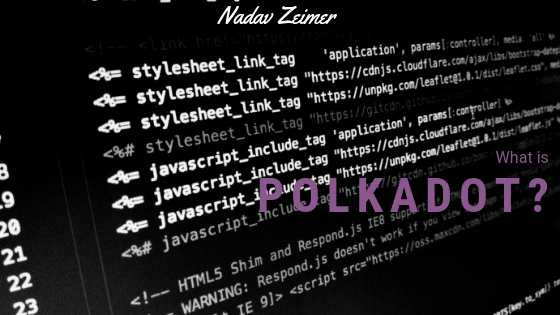PolkaDot is new, generalizable second layer blockchain framework that hopes to allow current blockchains to communicate with each other. This multi-chain framework platform is made to ease scalability, interoperability, fungibility, and privacy of widely different blockchains. The technology was created to help answer the question of “how can we make blockchains interact with each other?” Because there is no one blockchain, these different chains need to be able to communicate with each other.
The technology was proposed by Gavin Wood, the co-founder of Ethereum. Because transactions made using PolkaDot are spread throughout chains, it can foster increased liquidity and anonymity across chains. The software currently has an active Testnet that users can join to see it in action for themselves.
PolkaDot is made up of three main components: parachains, relay chains and bridges. Parachains, or parallelizable chains, are a more straightforward type of blockchain. It attaches to the security of the relay chain instead of having its own source of protection. The computations performed by these parachains are independent. The many parachains help users to retain anonymity.
A relay chain is one that coordinates transaction delivery and consensus between different member chains. It also helps finalize transactions. Without this, it would be impossible to move messages between chains. The bridge is the last part of the network. They connect back to the main chain, whether that’s bitcoin or any of the many ERC20 coins, among others.
The hope is that through the use of parachains, the amount of data each chain needs to process is limited. The parachains help to alleviate the load on the main chain which could even indirectly address scalability issues of the most popular blockchains.
Four cryptoeconomic network functions are needed for operation. They are validators, nominators, collators and fishermen. Validators are responsible for verifying and finalizing the candidates for parachains into blocks. To do this, they collaborate with other validators. Through staking DOTs (the internal token of the system) and choosing useful validators, nominators help to secure the relay chain. DOTs are used for governance in the system, allowing holders to vote on code changes, as well. Collators are those who help to maintain the parachain through collecting transactions into Proof of Validity candidates. The fishermen serve as the final piece of security. They observe the network and point out any bad behavior to the validators.
Parity Technologies and Web3 who oversee the project plan to officially launch the Polkadot network in the third quarter of 2019. Parity’s Substrate, a platform that lets users create customized blockchains for decentralized applications, is being used to develop the Polkadot protocol.

